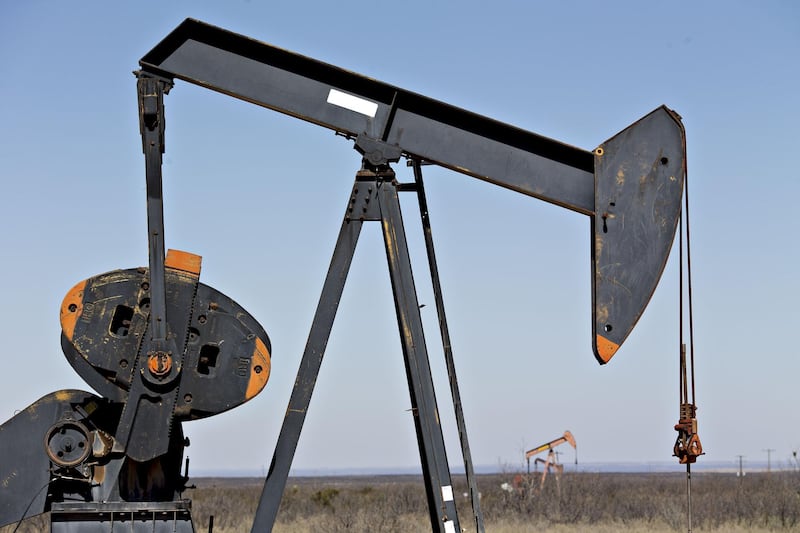Surging production from the Permian - the largest shale basin in the US - requires an “optimal” price band of $60 to $70 per barrel to maintain its momentum, according to the chief executive of the biggest player in the area.
"WTI [West Texas Intermediate] to remain in the $60 to $70 range and Brent a bit higher than that depending on how that differential works out, I think for US shale that's an optimal range even though development can continue at lower levels because of the lower breakevens," Occidental Petroleum's Vicki Hollub told The National in an interview in Abu Dhabi.
WTI is the widely used benchmark for North American crude.
The US became the world’s largest crude producer last year with output hitting 11.9 million barrels per day in November, outpacing sovereign producer Saudi Arabia, and Russia. The US Energy Information Administration has forecast rising output with US production likely to surge past 12.1 million bpd in 2019.
The Permian, from where output averaged 3.831 million bpd in January, is likely to continue its production momentum this year, said Ms Hollub.
"The Permian Basin in the US could go up to that level. It really depends a little bit on how oil prices go but it certainly has the capacity to achieve that level,” she said.
Occidental, which she said hadn’t put an estimate on its own estimated production growth for 2019, is nevertheless expecting “growth above 11 per cent [seen] in 2018,” added Ms Hollub.
Spending plans this year for the US energy firm will likely range between the $4.4 billion to $4.5bn range should WTI average $50 per barrel.
______________
Read more:
IEA says oil demand is unlikely to peak in the next 15 years
US refiners to feel the squeeze from Venezuelan crisis
______________
"In our earnings call, which will be in a couple of weeks, we’ll have a better idea on how prices will do and will firm up the budget. So we’re now looking at not closer to $5bn but closer to $4 to $4.5bn,” said Ms Hollub.
Brent crude is expected to average closer to $70 per barrel for 2019 with volatility foreseen short-term until the impact of Opec cuts are felt, she said.
"I believe that Brent will be between $60 and $70, probably closer to the $70 range and I think, at that point, things will stabilise and then people will feel more comfortable about where to set their capital levels,” she added.
Brent futures recovered to $62.75 per barrel on Sunday as tightening supply from Venezuela, following the impact of US sanctions as well as production cuts undertaken by the Opec alliance began to take hold.







